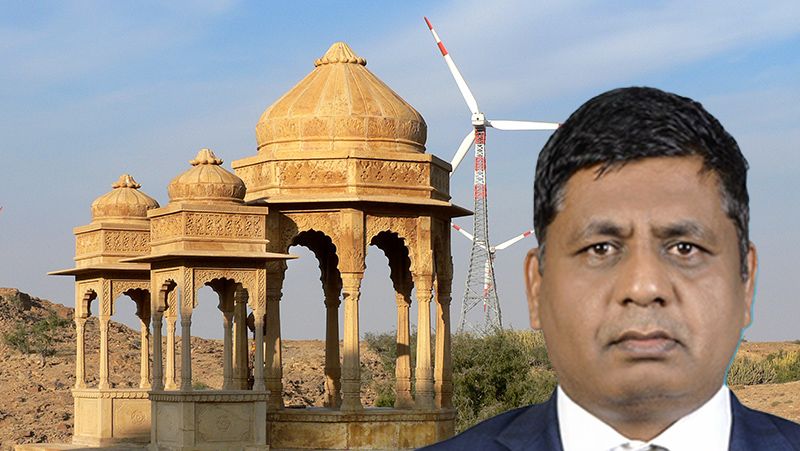Investors are beginning to take note of India as a pivotal player in emerging market equities. The economic and policy foundations built by the Modi government create the potential for the Indian economy to join the US and China in the $10trn GDP club by 2035 if nominal GDP growth rises by 10% per annum.
While the country is showing signs of strong economic fundamentals, its historic reliance on imported fossil fuels has tended to negatively impact its fiscal deficit and input costs. As a result, India has now set itself an ambitious goal of decarbonising energy to 50% and achieving 500 gigawatts (GW) of fossil fuel-free generating capacity by 2030, as well as also pledging to reach net-zero emissions by 2070.
With these ambitious targets set, one of the fastest growing sectors in India has become renewable energy. A number of government programmes have been introduced which have contributed to this, most importantly being the Production Linked Incentives (PLI) programme which has encouraged companies to produce solar panels, reducing reliance on imports.
Energy supply chains
Recent policies have been announced that aim to address the issue of a supply and demand mismatch in renewable energy, which meant renewable energy only accounted for 12.5% of electricity consumption between April and December 2022 . Most notable is the development of pumped hydro or pumped storage power (PSP), which is a well-established alternative to battery-based energy storage systems. India’s current PSP capacity is 4.7 GW but estimates from the Ministry of Power (based on PSP plans) highlights 55 projects that could potentially deliver additional future supply of 73 GWs.
There is also resistance in expanding hydro projects from river-based – which are the only source of hydro power in India – to off-river sources. An added factor is interconnection with the electricity grid, which is a common issue globally for new renewable energy projects.
While uncertainties remain, if India is to meet its carbon reduction targets, PSP in combination with solar will be part of the solution from an electricity generation perspective.
Decarbonising India’s transport sector
One of the other important ways India plans to achieve their goals is through broad-based development of their transportation systems. In particular the introduction of the India – Middle East – Europe trade corridor, which aside from goods is envisaged to include the export of energy, including green hydrogen, from the Middle East to India and Europe. Elsewhere, Mumbai has announced plans to invest $40bn to decongest and decarbonise transport.
The investments include a metro network of 14 lines – three are operational, five are under construction and the remaining six are in the planning phase. At the national level, India is planning 50 metro projects, up from 20 currently in operation and the National High Speed Rail corporation is building a 508 kilometre high speed rail line between Mumbai and Ahmedabad. Once complete, it will reduce the journey time from six to two hours.
Reliance Industries, one of India’s large conglomerates, has made some significant steps into green energy, which has been important to India’s decarbonisation story as a whole. Reliance Industries is building a fully integrated end-to-end renewables energy ecosystem for customers through solar, batteries and hydrogen and has the capacity to build a third of the country’s solar capacity target by 2030.
Tata Motor’s, one of India’s biggest automobile manufacturing companies, has also committed to sourcing 100% renewable electricity in its operations by 2030, and was the first in the country to mainstream electric vehicles for personal mobility. They have also announced plans to align their product plans to include spectrum of clean alternatives across battery EVs, hydrogen fuel cell vehicles and hydrogen ICE vehicles.
It is evident India is benefiting from the key megatrend of decarbonisation. Broad-based infrastructure development focusing on improving capacity, decarbonisation and self-sustaining business models is now becoming the norm.
As India continues its decarbonisation journey, there are interesting investment opportunities that will emerge which investors should be paying close attention to.








